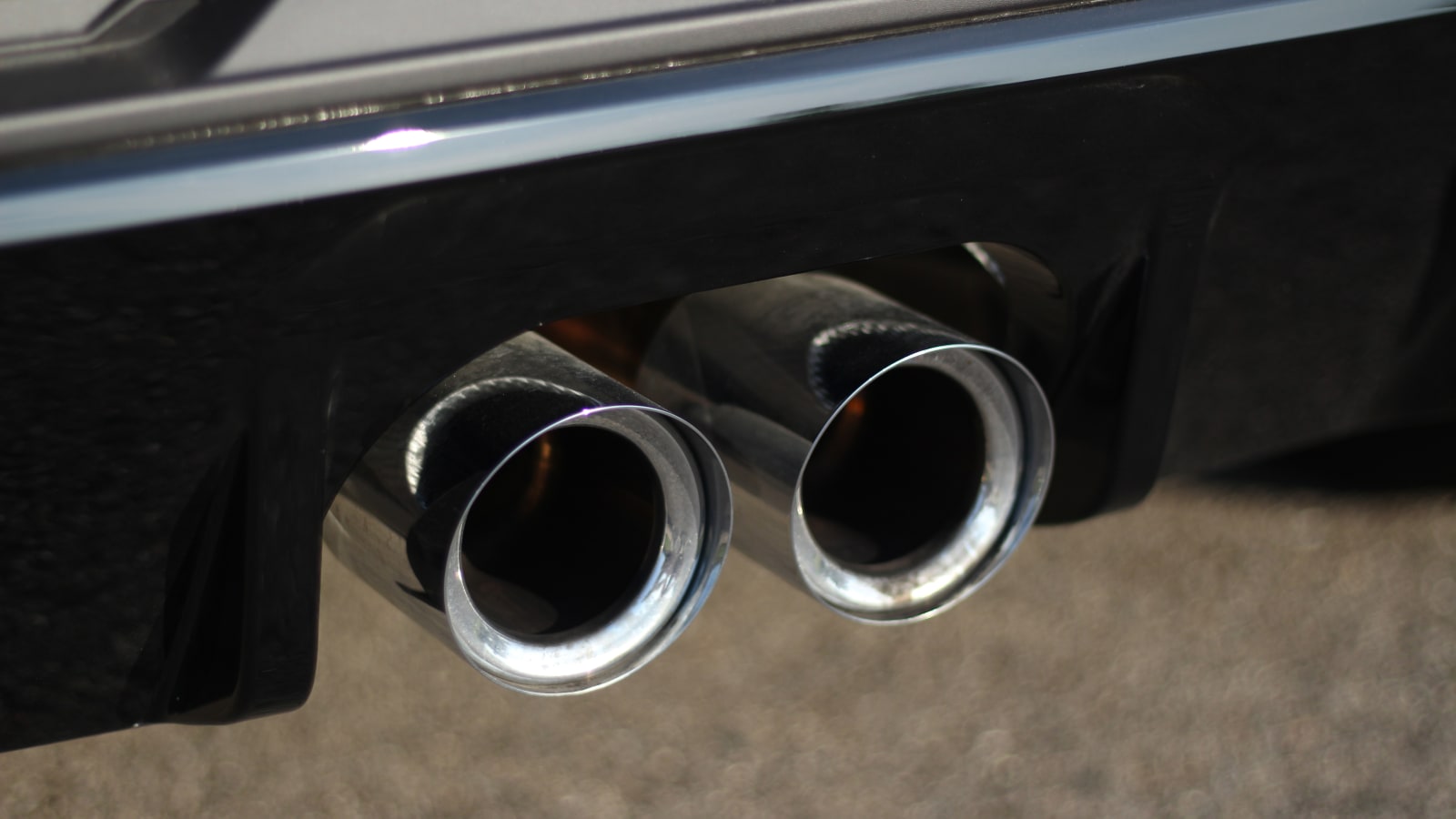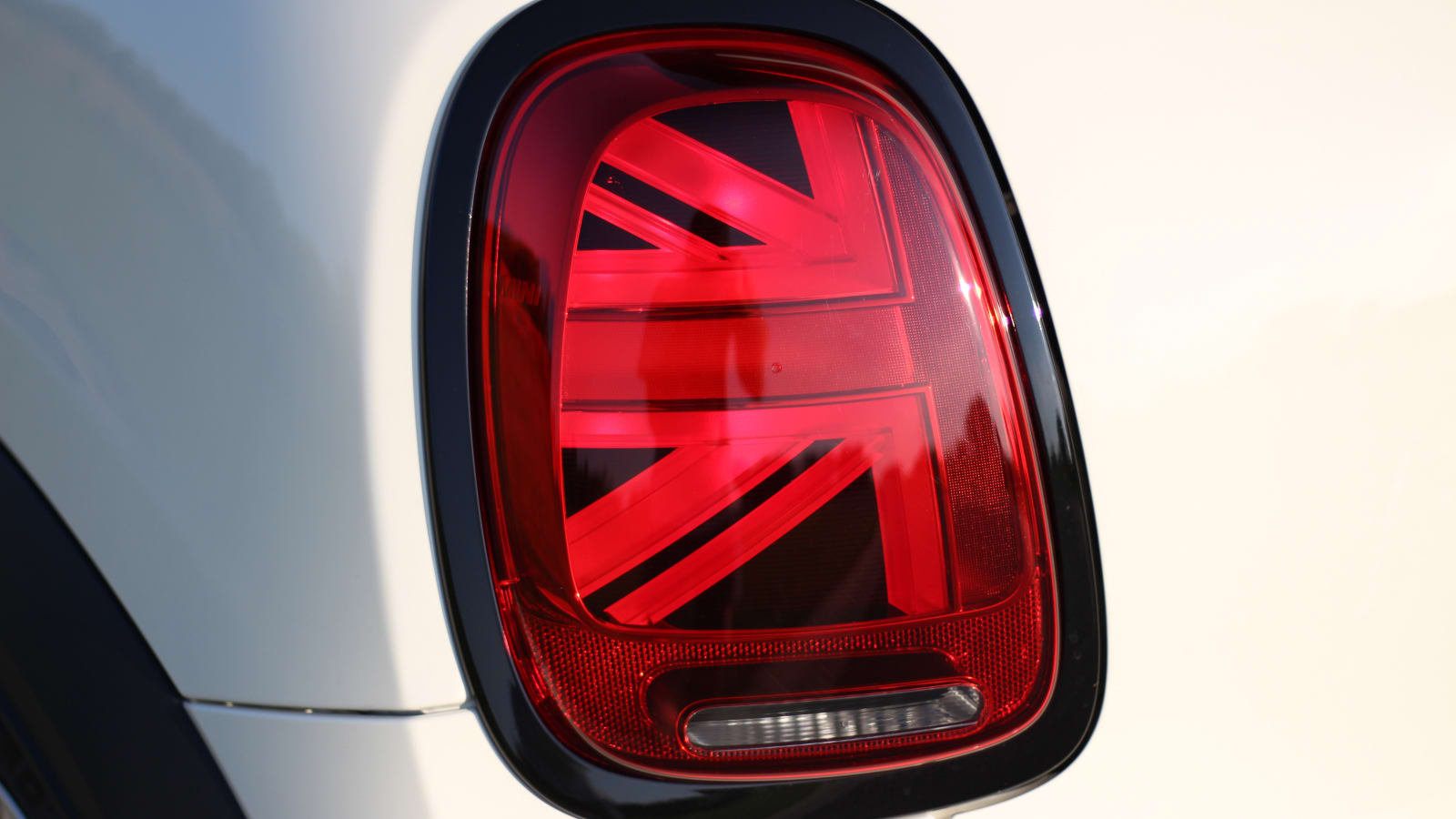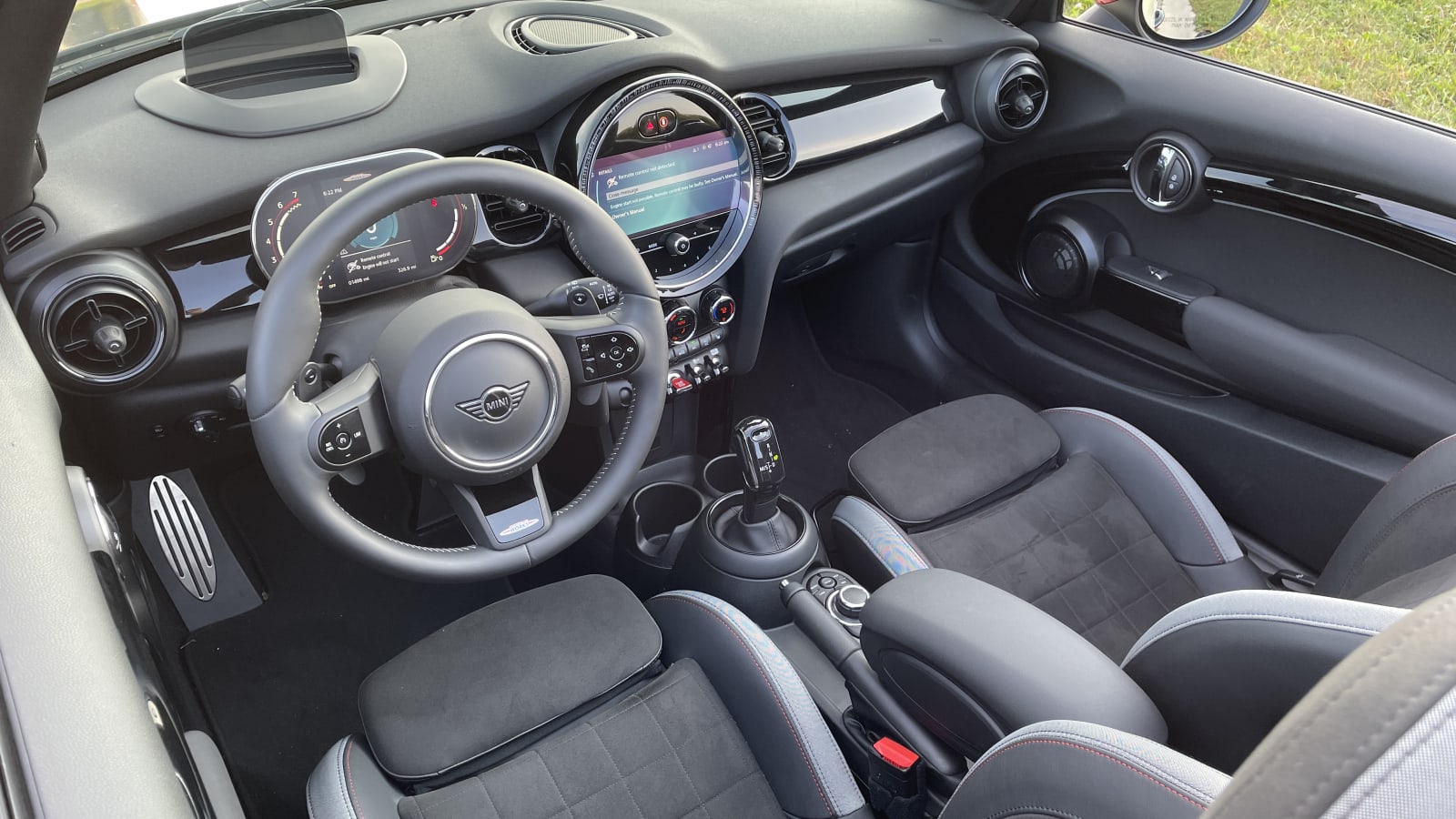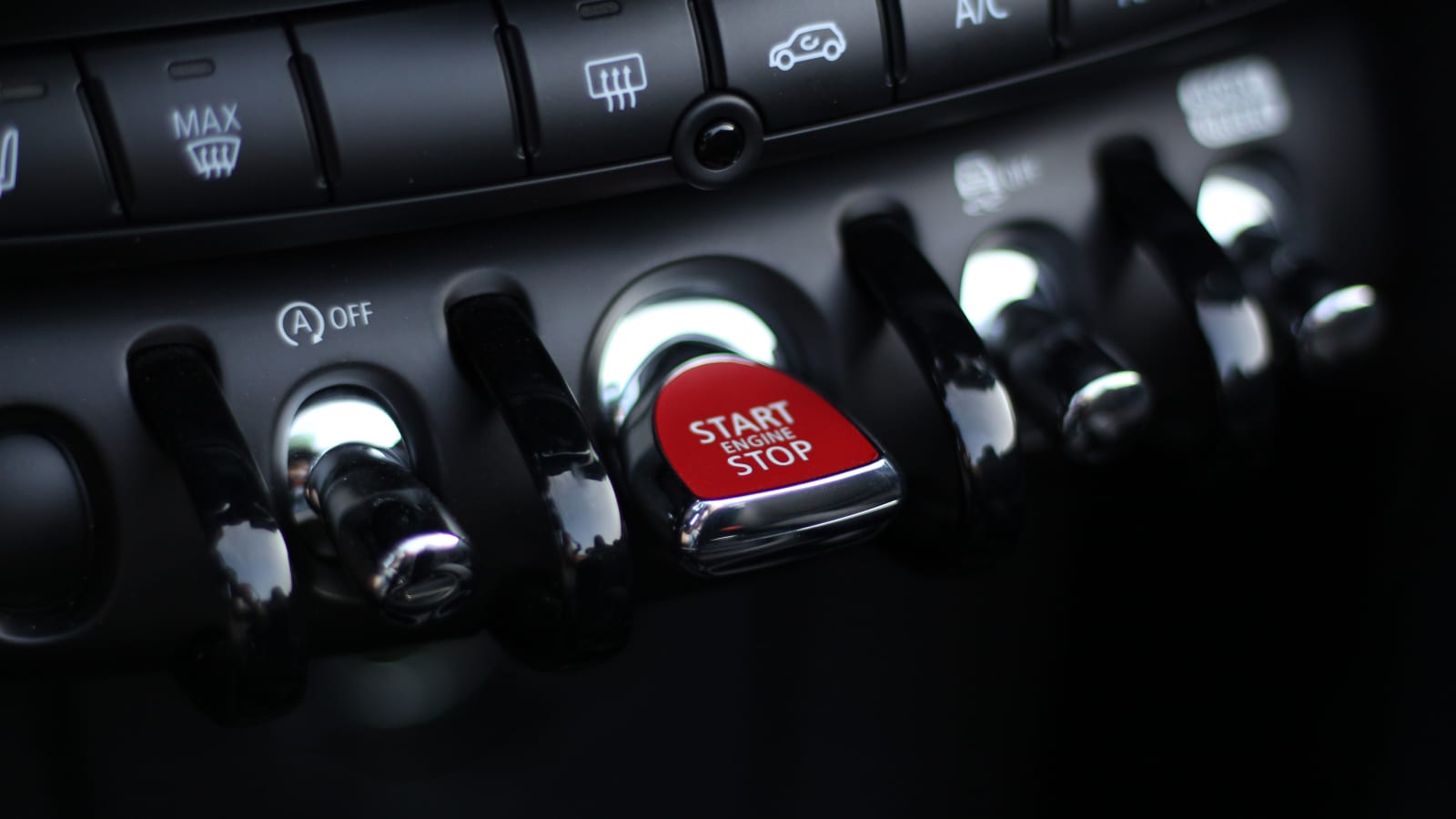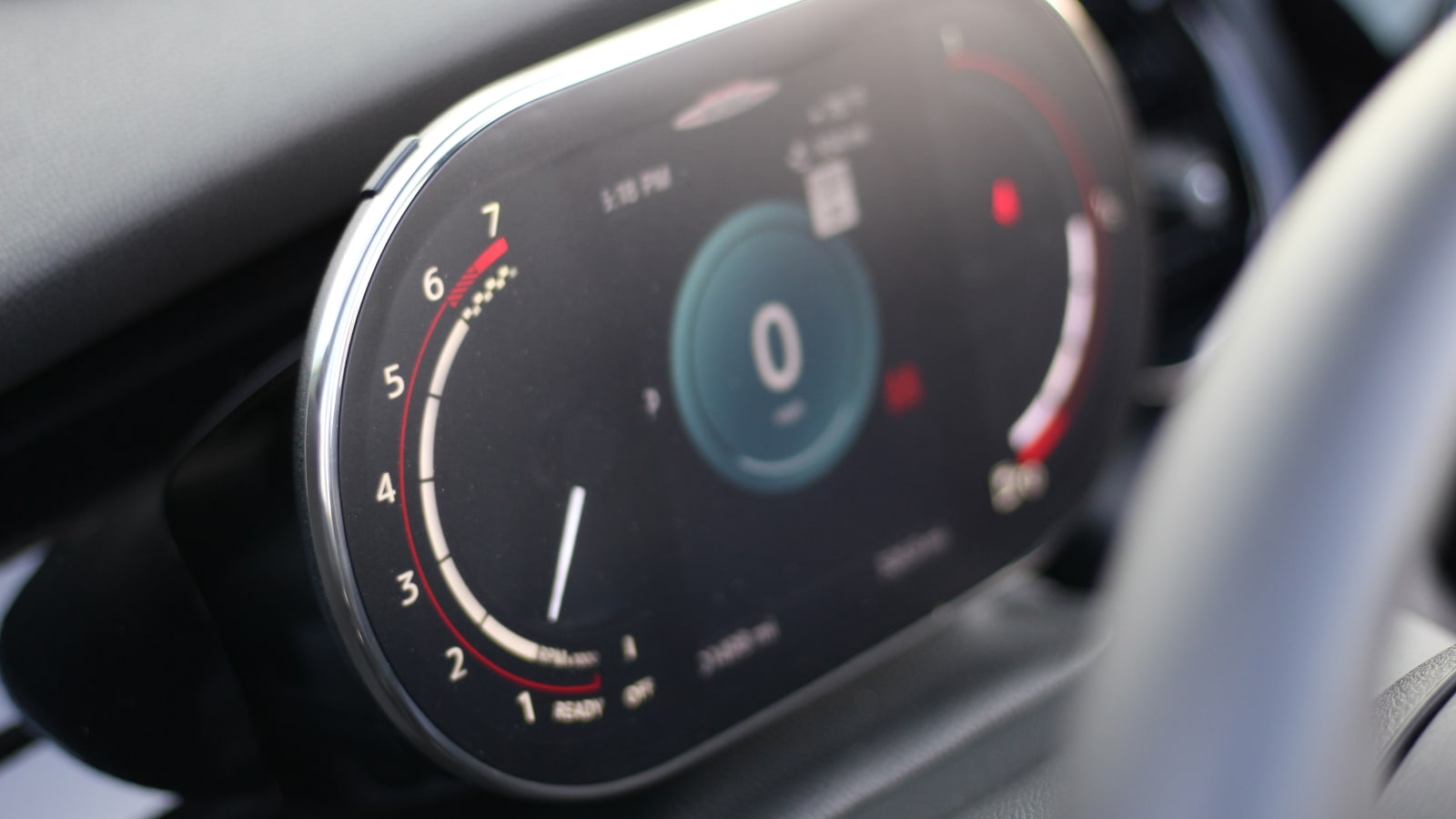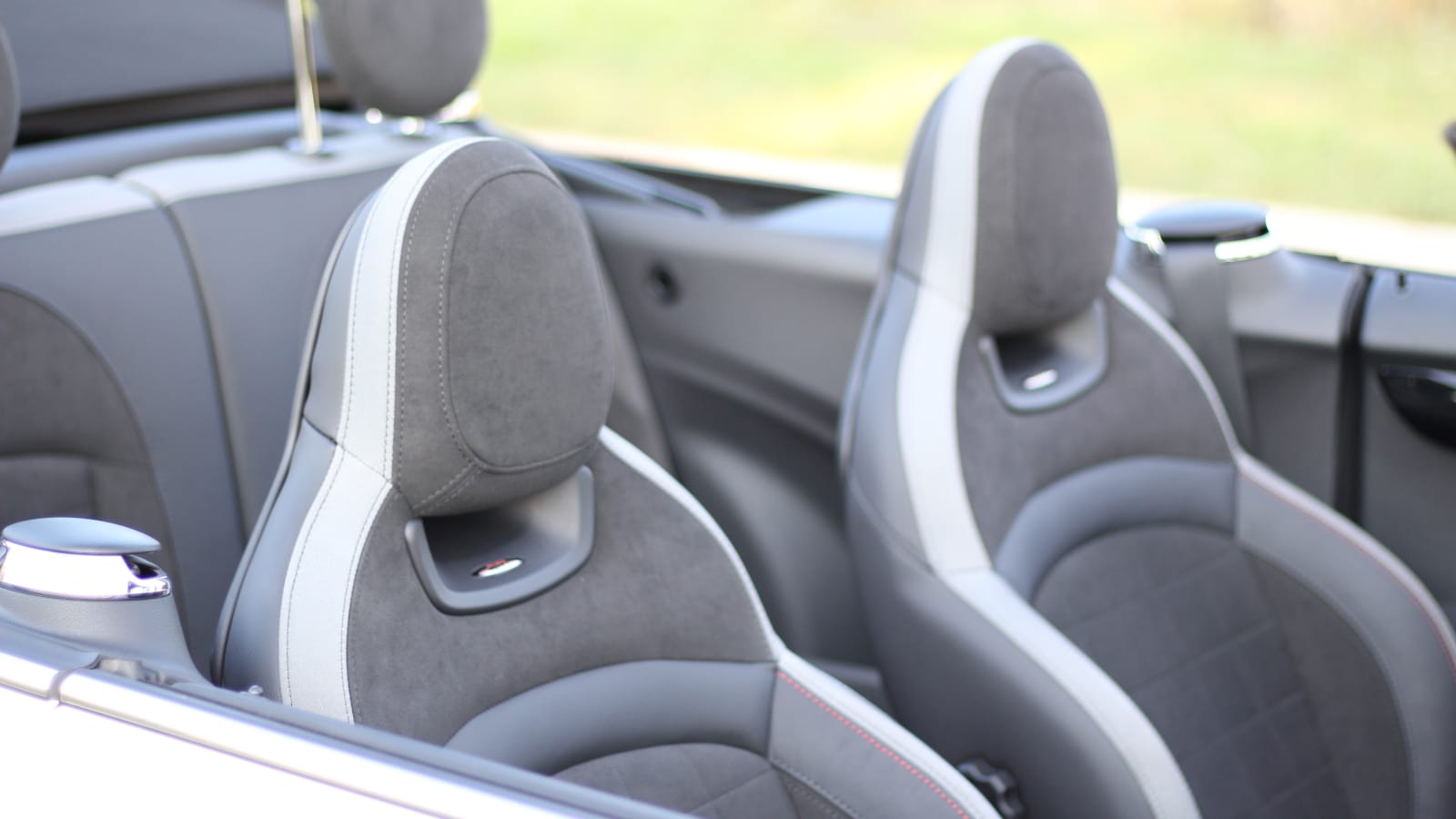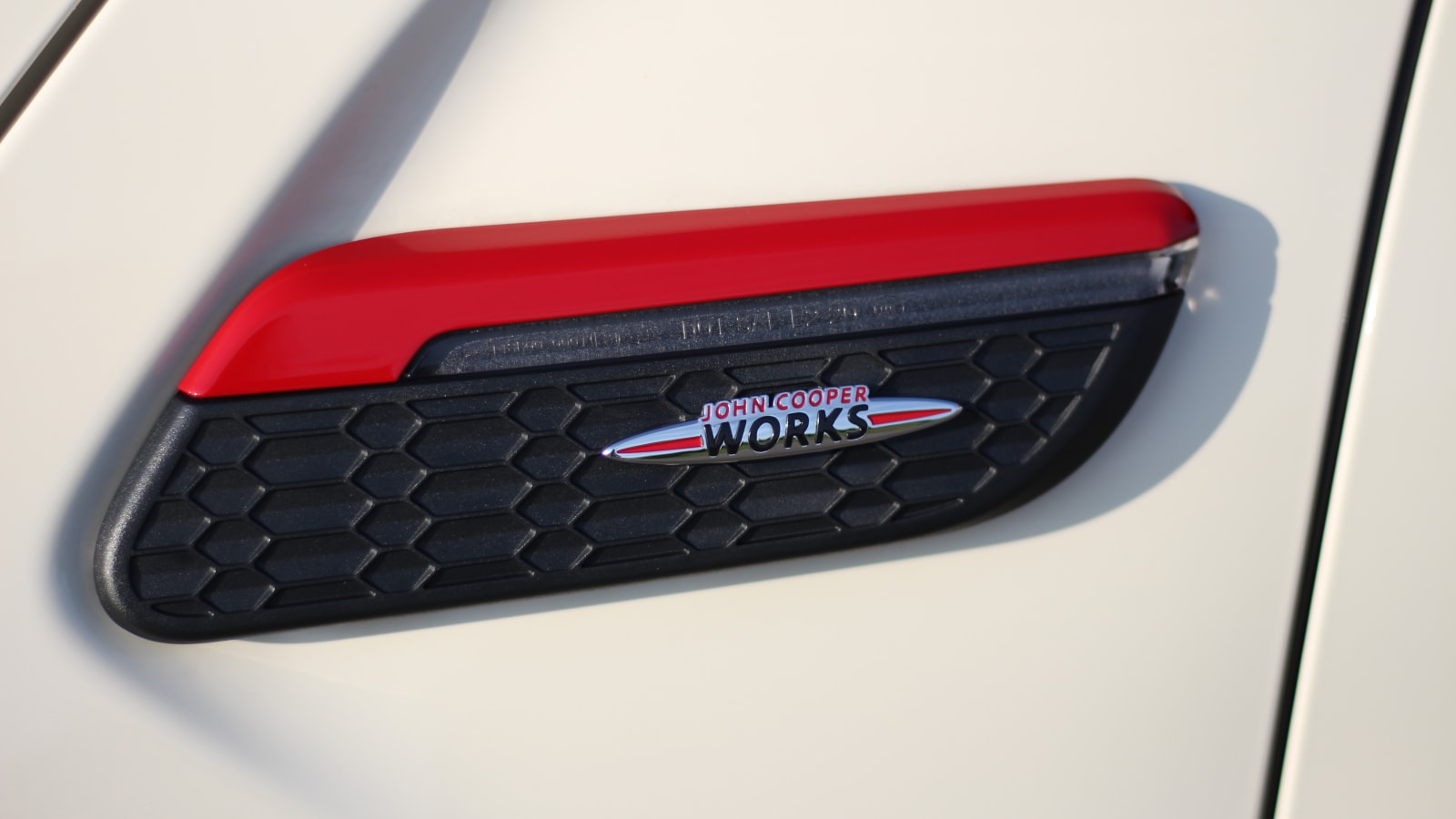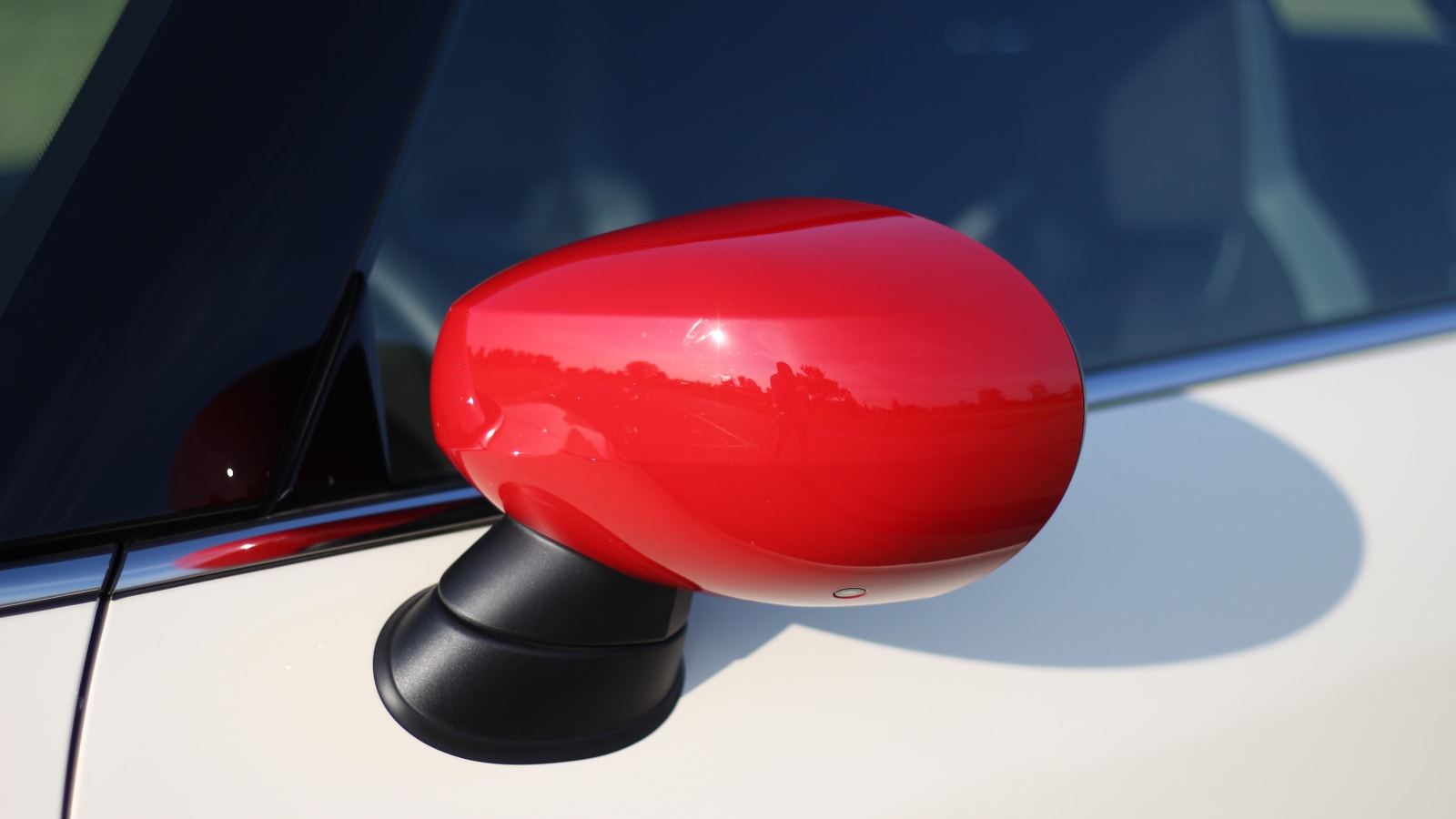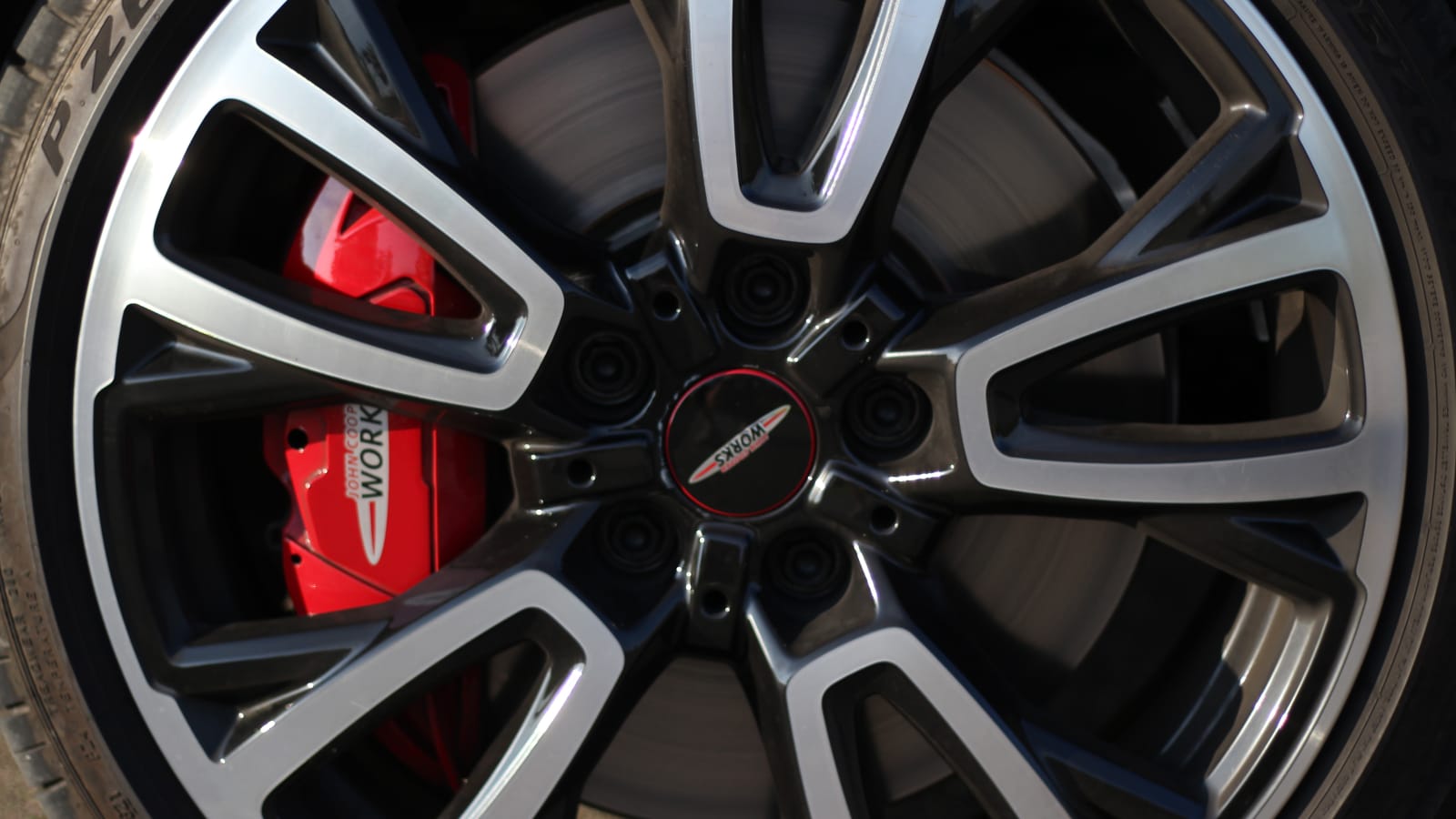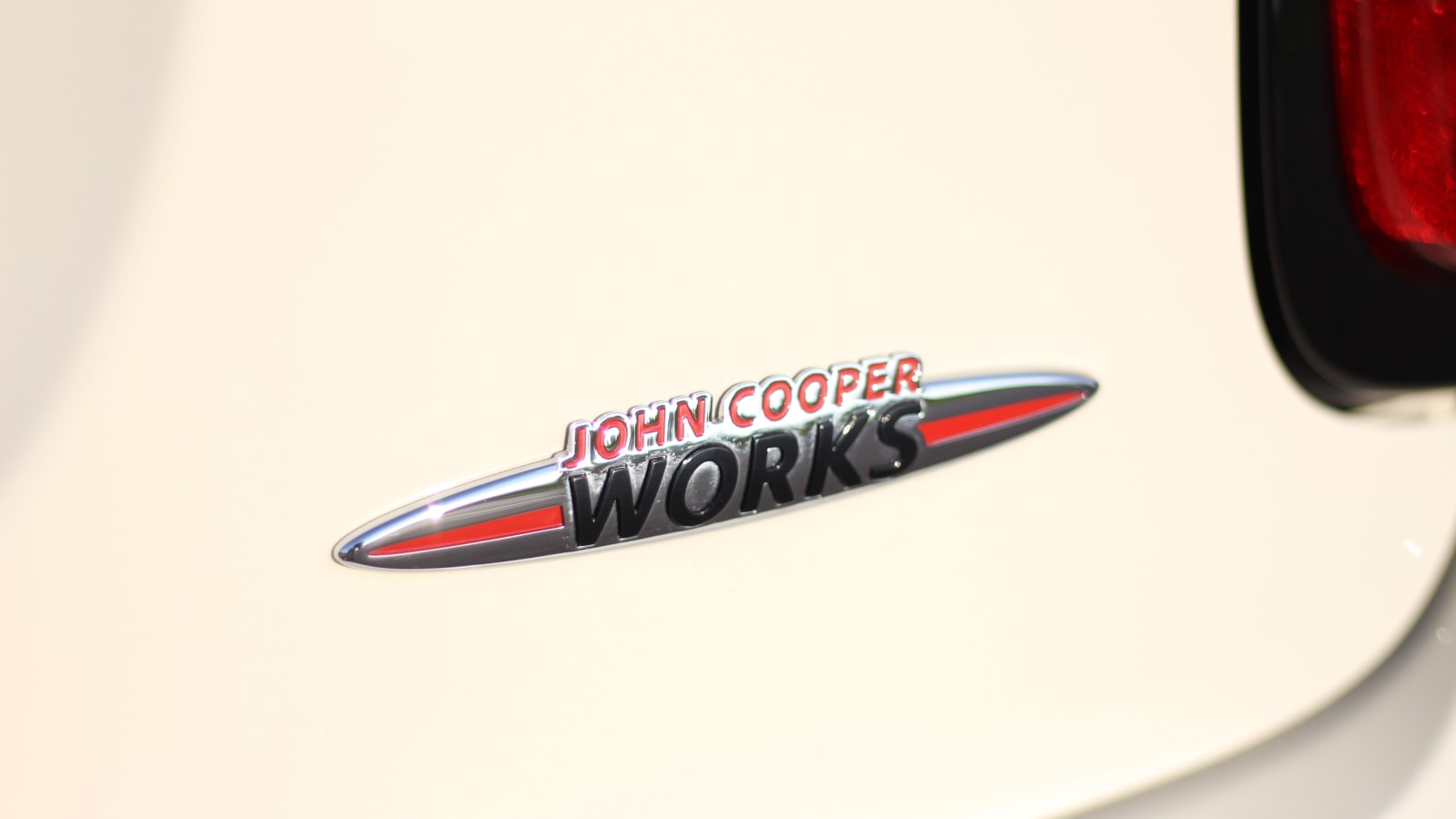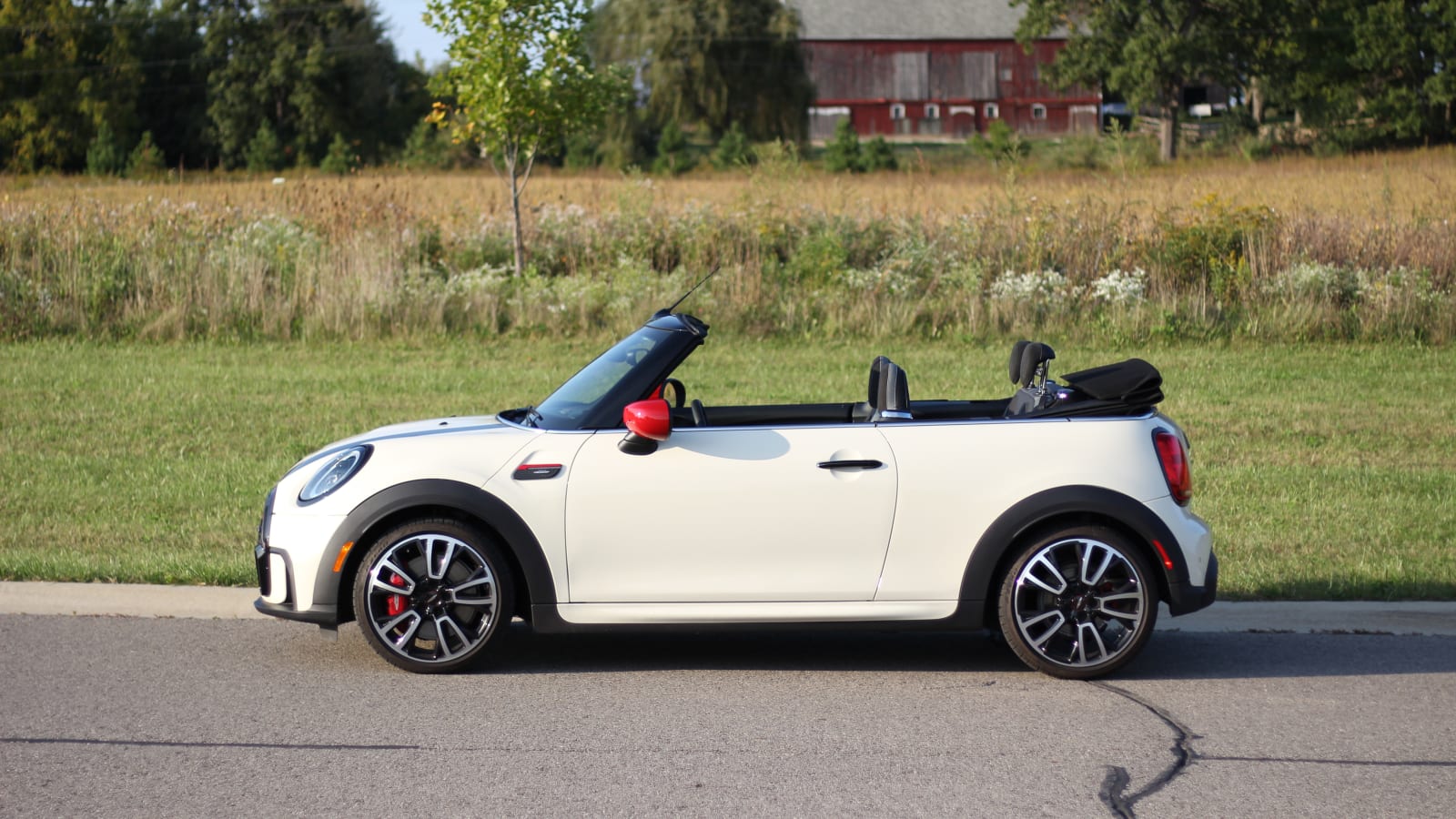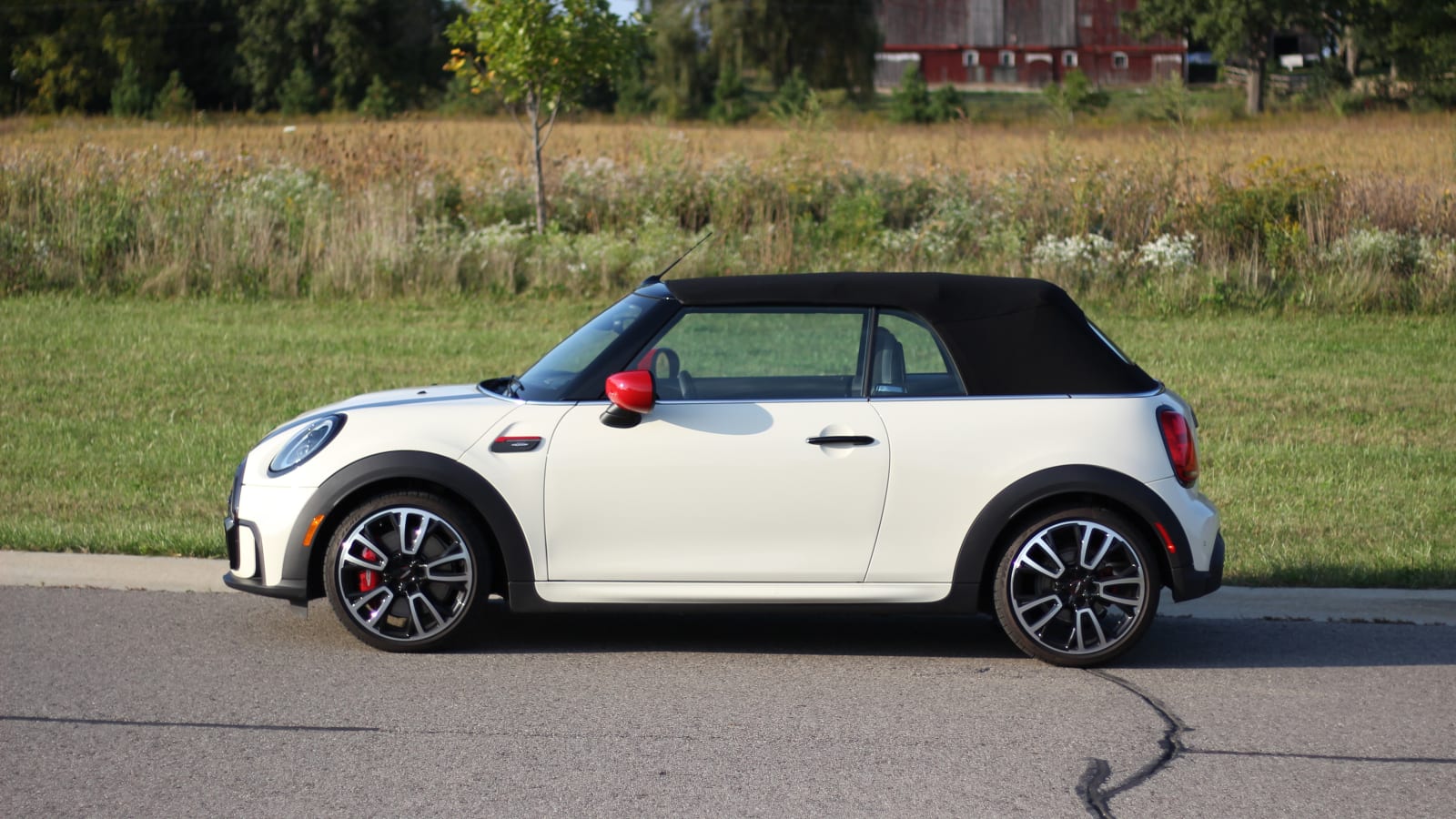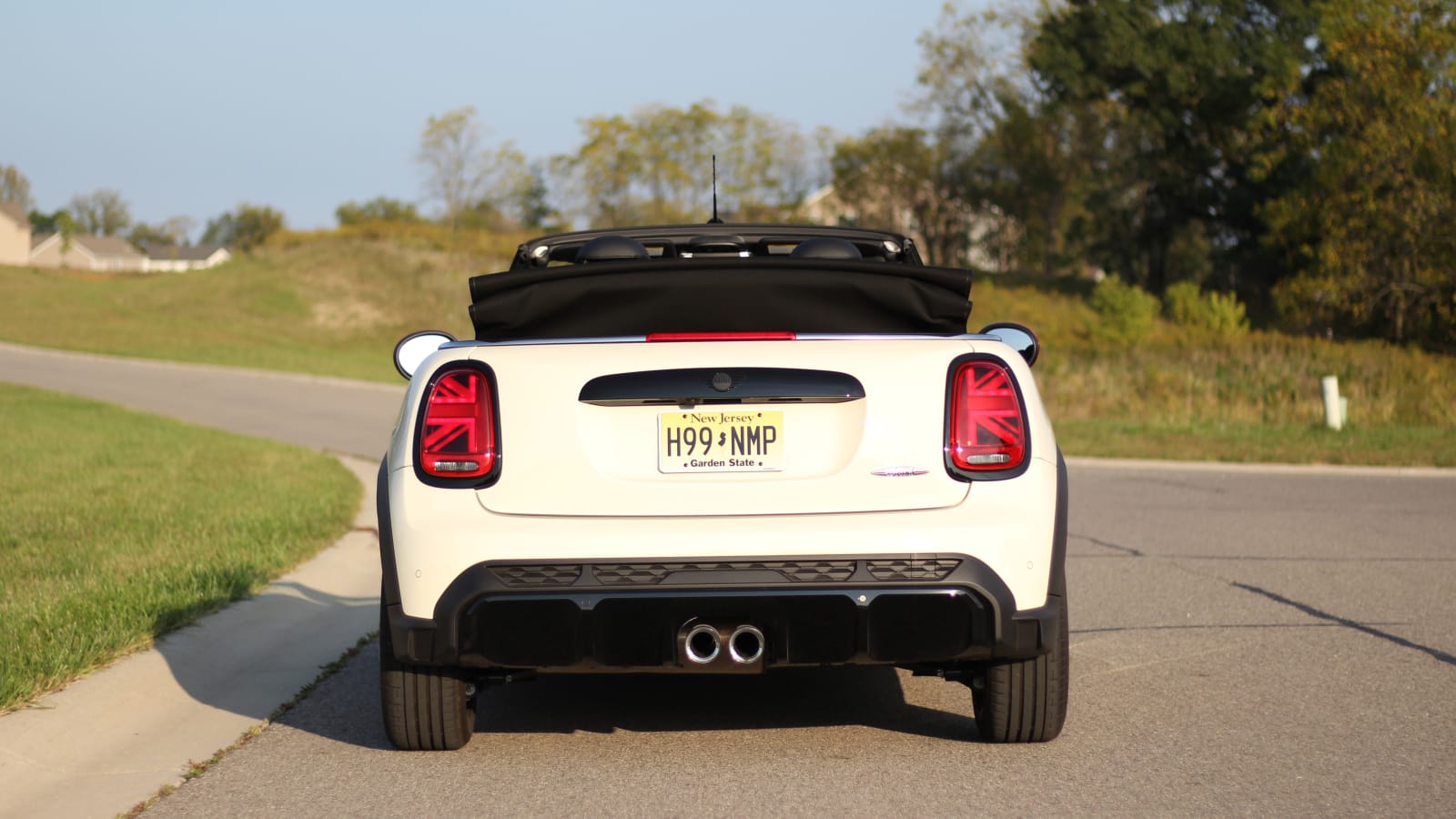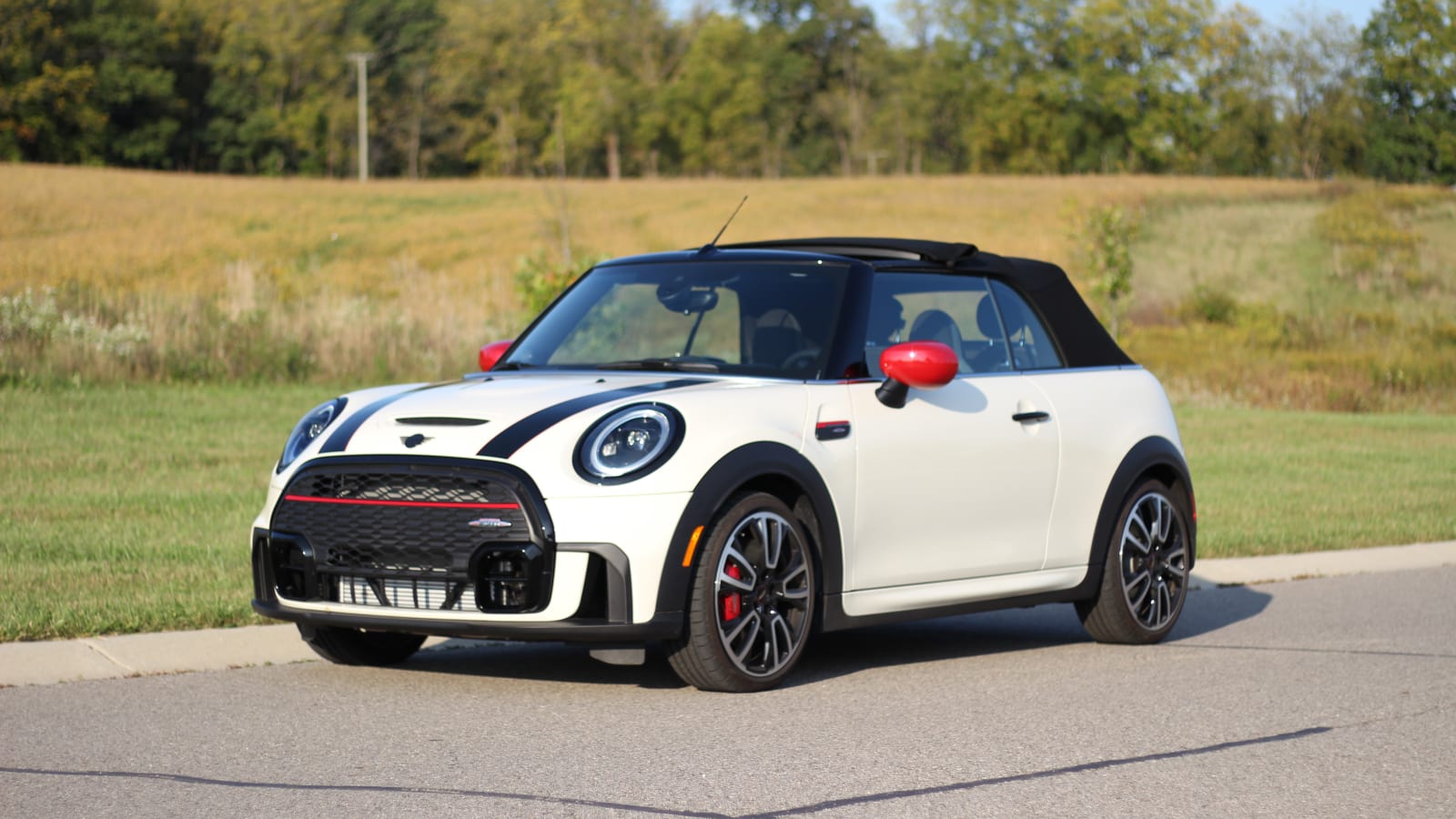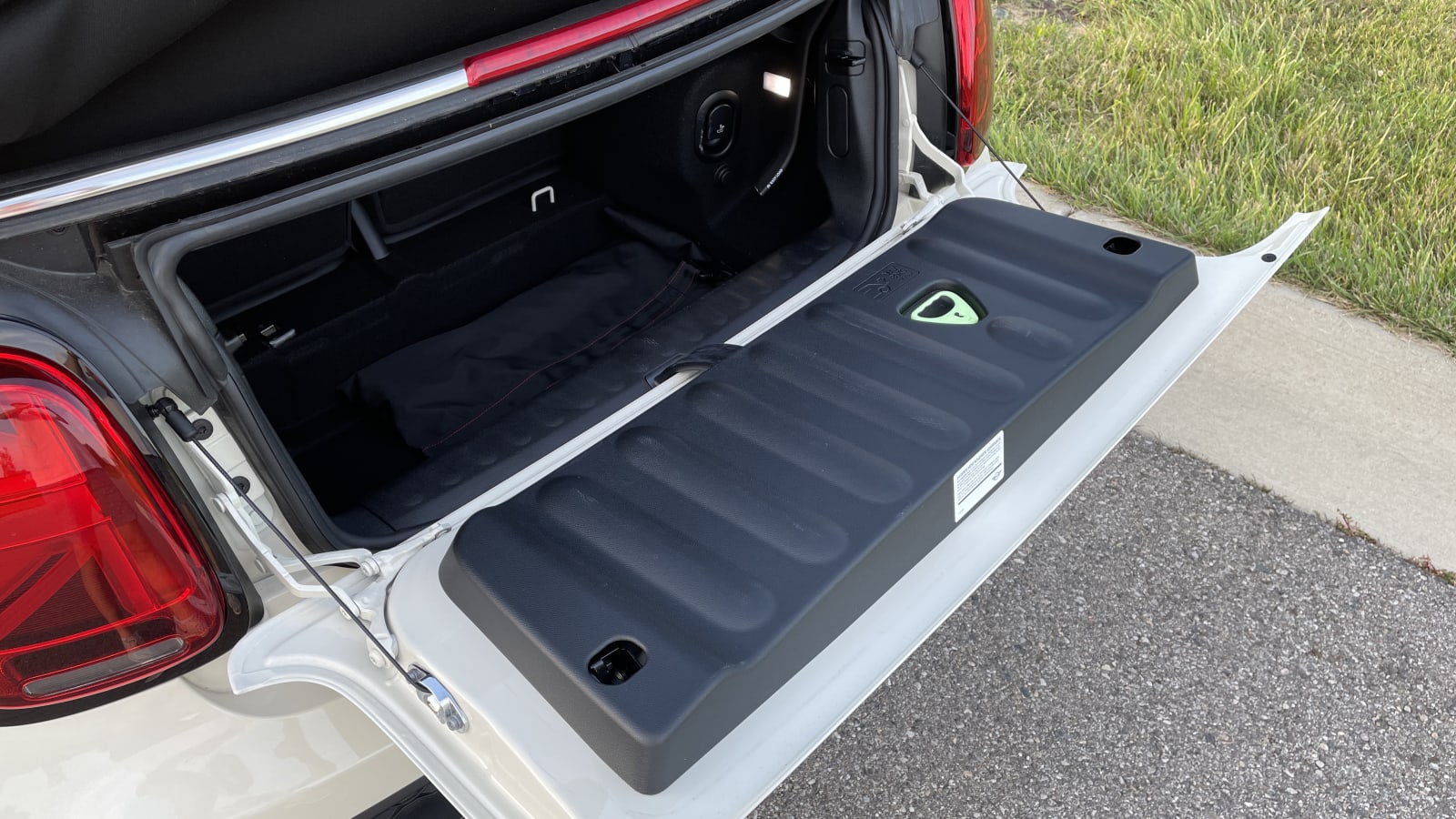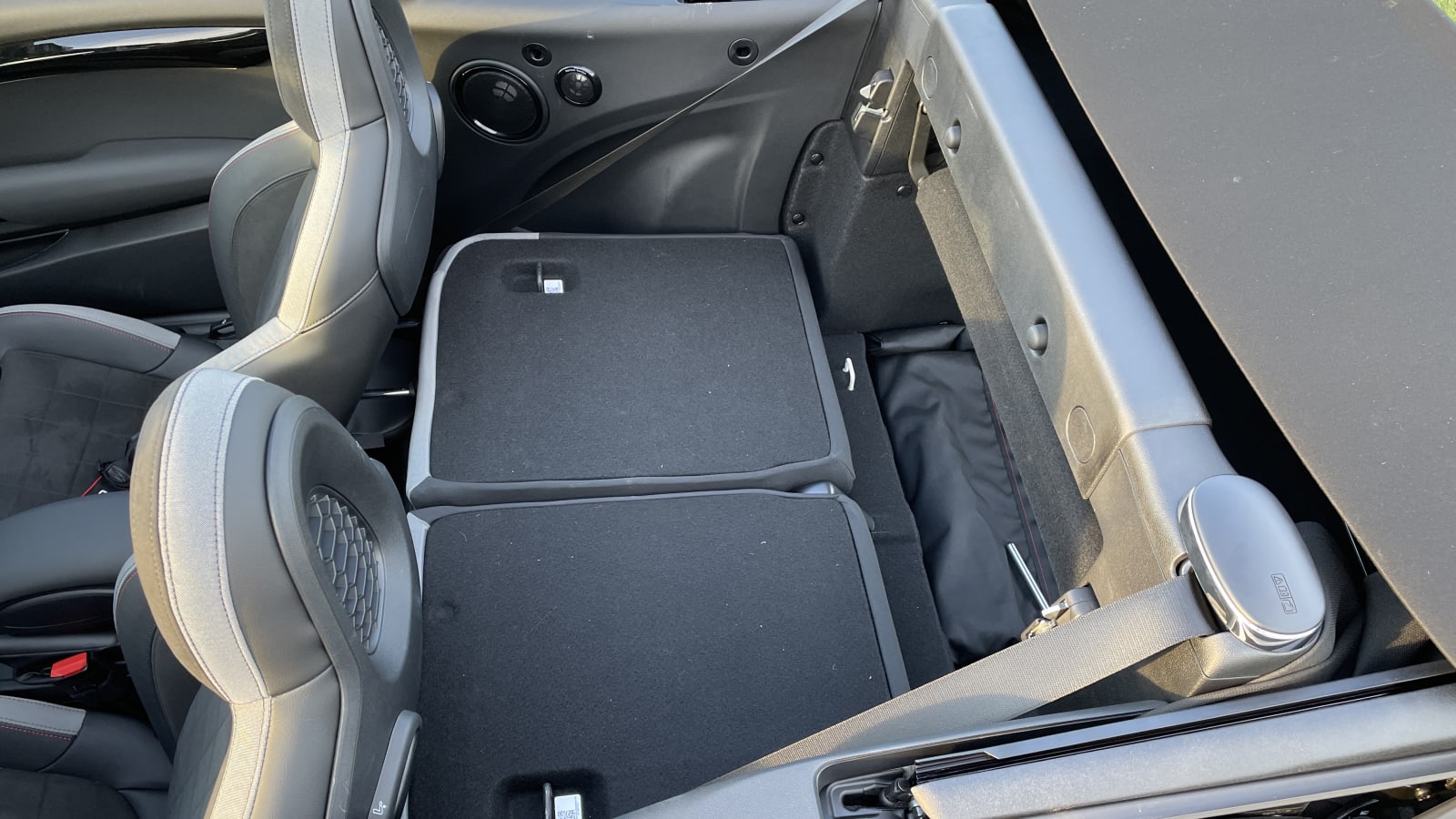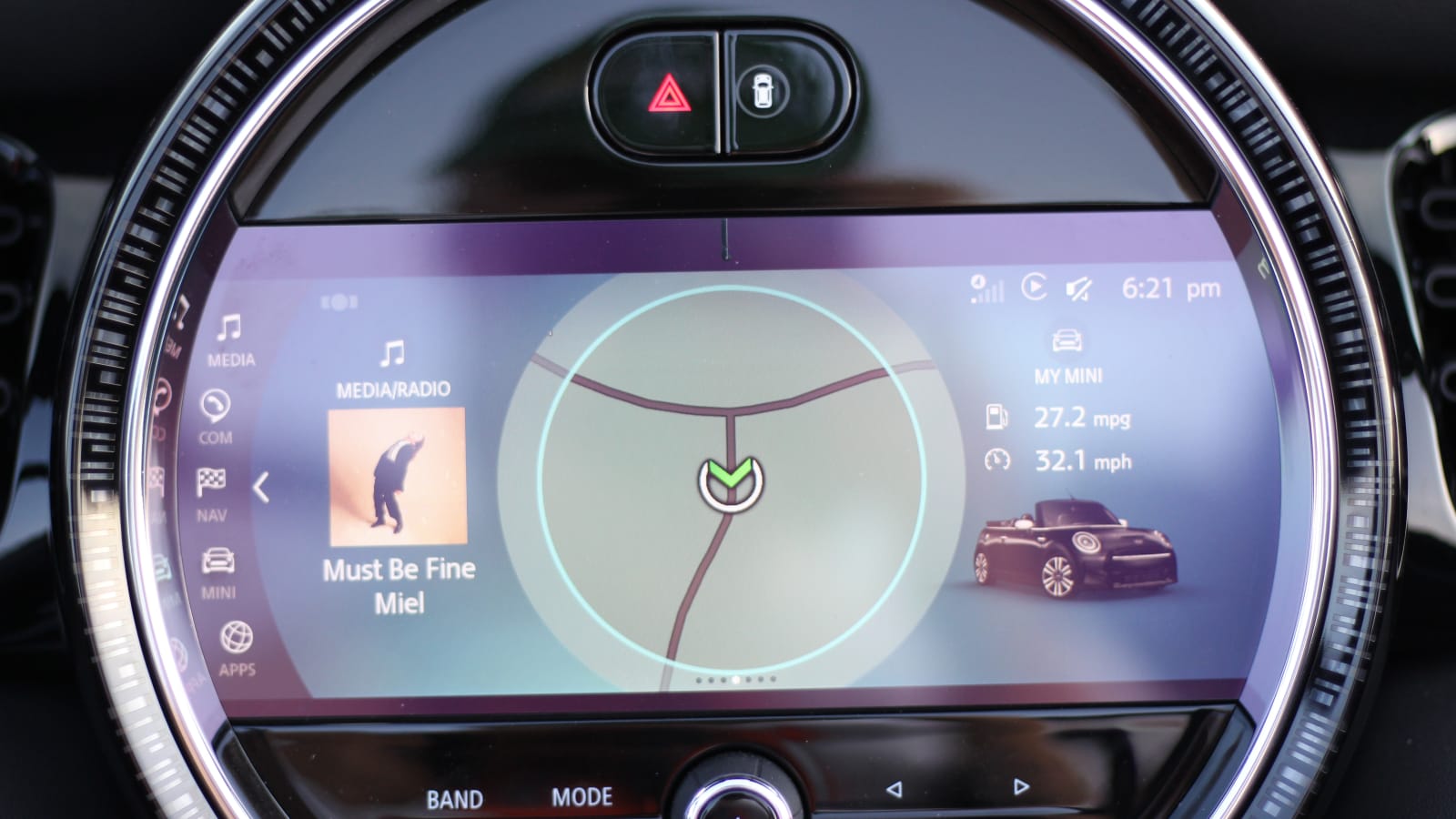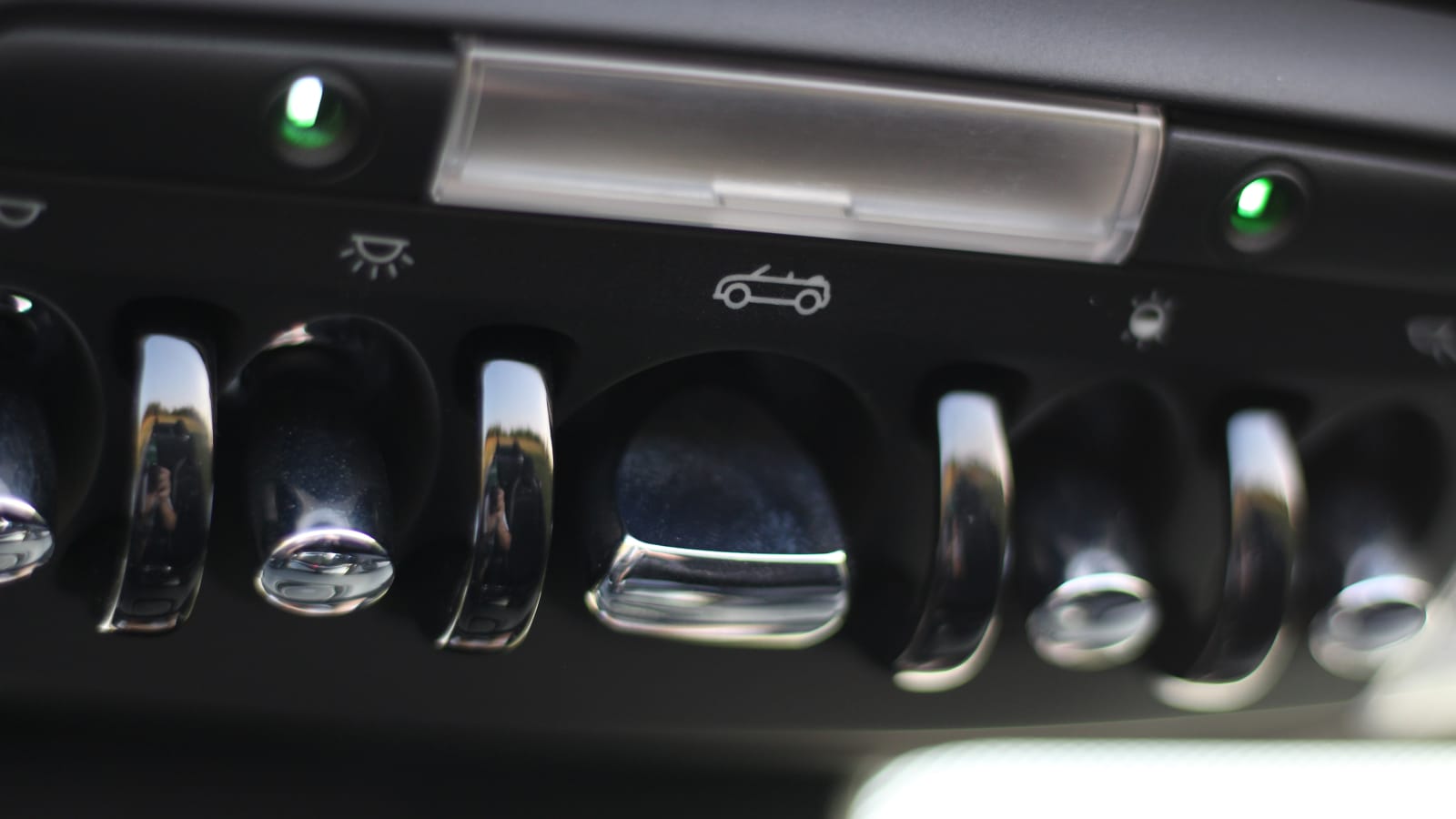The 2022 Mini John Cooper Works Convertible just wants to have fun. It’s not the best performance bang for your buck. Beauty isn’t its strong suit. And the interior isn’t making up for other shortcomings — LOL if you want to make use of the trunk or put an adult in the backseat.
But dammit. The JCW Convertible sure knows how to spread a smile across your face. It all starts with the little 2.0-liter turbocharged four-cylinder under the striped hood. Mini attaches one of the shoutiest exhausts available on any car to this engine, and it’s literally popping and crackling with character. Lose the roof, and you’re simply that much closer to the theatrics. Nobody expects this tiny car to make such angry sounds, but no matter what mode or setting you’re in, the JCW makes it known that the drive is about to be an experience.
We knew all of the above from driving past JCW models, but Mini made a number of changes to the 2022 JCW lineup that applies to both the Hardtop and Convertible. We’ll start with the looks, as they’re easily the most controversial of the bunch.
Mini gave the JCW a totally new front with updated LED headlights and a much larger grille with squared-off openings for greater engine cooling capacity. It all looks drastically meaner than the previous JCW. What that car’s grille was still ensconced in honeycomb, the face had a playful and friendly demeanor. The new JCW face is looking at you with a bloodthirsty hunger for air and incoming bugs. We will say that photographs don’t portray it in the best light, as even though it may appear tall and menacing without scale, the Mini’s small overall size dampens the grille’s effects.
Beyond the changes up front, Mini has fitted the JCW with a new rear diffuser and retained its signature Union Jack taillights that are oh-so-fun to see at night. It all hangs together well enough, but we can’t be calling the Mini cute anymore. Instead of resembling a soft, friendly rabbit, it’s much more of a rabid raccoon now.
Another important change for 2022 is a newly-tuned and optional adaptive damping system. Mini says new frequency-selective damper tech allows the car to ride a hair smoother on poor roads. Meanwhile, its stiffest setting is 10% more aggressive than before, increasing agility even further on the track, Mini claims. However! Our test car was not fitted with these dampers, and instead had the standard, fixed JCW Sport suspension.
As all Minis tend to, this JCW Convertible is rather stiff and uncomfortable when you’re not aiming for apexes. Is it acceptable for those who are accustomed to a stiff-riding vehicle? Yes, in that context, it’s fine. But don’t even consider trying to take a sip of water on a poor road. You’ll soon be wearing the beverage, and your passenger might be, too. We’re hoping to get a shot at the adaptive dampers one day to see what difference they might make.
The racetrack-ready ride comes into its own when you get the JCW Convertible out to roads it was designed to conquer. What helps even more is the Mini’s properly mini size. The JCW Convertible comes in at just 152.8 inches in length, which is hilariously tiny for new cars these days. And even the Convertible with its electric soft top and standard automatic transmission comes in at just 3,071 pounds. That’s no featherweight for its footprint, but it’s still light in the greater context of new cars today.
Combine the small size with all of the JCW-specific chassis fittings, and you’re left with a super-capable car that still manages to be cheerful and fun to fling about. Lean hard on the Mini into corners, and it’s superbly balanced for the sort of driver who wants to feel the rear end of the car at all times. It may be front-drive, but you can use the steering to play with the rear all you want, which is the mark of a front-drive car set up for driving enthusiasts. The suspension limits lean in a similar fashion as we experienced in JCWs prior to this one, but not so much as to remove all movement from the chassis.
Plus, with Mini’s choice of sticking with relatively small contact patches at all four corners — 205 section-width summer tires — you can have fun on the road without stretching a G meter past 1.0 G. Ditto the power on this point. Mini claims 0-60 mph happens in 6.3 seconds (launch control starts see you getting tire scratch in first, second and third), which is plenty to have fun, but not so much that you’ll be getting frequent speeding citations. One could make the argument that the Mini is behind its would-be competitors in power, but I’d argue there’s absolutely nothing wrong with 228 horses and 235 pound-feet of torque in a front-drive performance car.
There are some gripes. The steering tuning in Sport is a touch artificially heavy (if vaguely indicative of the original reborn Mini of the 2000s). It’s much more natural in Mini’s “Mid” (normal) setting, but without an individual or custom mode, you want it in Sport for the extra exhaust noise and better throttle response. And unfortunately, this Mini being the Convertible means it’s compromised in the ways we’re used to seeing when hardtops have their roof’s cut off. The structure never feels flaccid in and out of corners, but a sense of solidity is missing versus the Hardtop. There’s a bit of cowl shake, and the weight penalty (192 pounds) is noticeable when you come crashing down a little harder over crests or squeeze the brake pedal especially tight. The big four-piston Brembos still have plenty of braking power for the Convertible, but the Hardtop is just all that much more eager to screech to a halt.
Lastly, it’s a shame that you can only get the automatic with the JCW Convertible. The driver’s version of the two-door JCW is undoubtedly the Hardtop, but the drive would’ve been even more fun with three pedals. As a consolation, at least the eight-speed automatic is fully competent. It upshifts and downshifts on time in Sport, and the paddles (while a tad small and plasticky) are quick to respond. Plus, you get little rips and bangs with each shift.
A sequence of ups and downs continue for the JCW when you get into everyday use. Mini gives you two different options for how intimate with the wind you’d like to be. The first setting simply shoves the canvas top rearward to the seatbacks of the front seat, leaving you with a glorified full-width sunroof. And then there’s the full convertible setting that shoves the top back and folds it up on top of the tailgate — and yes, it’s a tailgate, like that on a pickup. Unfortunately, Mini choosing to set the roof on top of the tailgate means your rearward vision is almost entirely cutoff with the top down. It’s like driving a miniature box truck, because you’ll be entirely reliant on the Mini’s side mirrors to check for incoming traffic. You’ll want the wind screen up for highway trips with the top down, as it’s difficult to hear passengers below a screaming level volume without it. Then again, these downsides and quirks are common with the Convertible’s previous generations.
On the plus side, Mini resting the top on the tailgate means that trunk space doesn’t change with the top down. “Space” is relative, of course, as there is only 5.2 cubic-feet, but we were still able to fit a full grocery trip’s worth of stuff back there (though the bread did take an L). Drop the rear seats to the folded positions, and the usable cargo space skyrockets. It’s a great, wide area to toss items — we even put a fully-assembled office chair back there, so don’t underestimate it.
When it comes to tech, Mini upgraded the infotainment system this year from a 6.5-inch to an 8.8-inch touchscreen. It’s still annoying and unintuitive to use with outlandish graphics and a strange menu structure. You get the most difficult-to-connect-to wireless Apple CarPlay in the biz, and no Android Auto. The digital cluster is a nice tech upgrade over the quirky gauge set pre-update, but the graphics are distractingly not as sharp as those of the touchscreen, and the screen itself partly washes out in sunlight with the top down. Mini also gives you a new steering wheel with poorly placed buttons — we accidentally hit them all the time when turning. But at least the wheel itself is nice, and the well-bolstered JCW-specific seats are even nicer.
And all of this can be yours for the cool sum of $45,850, our tester’s final price. Before packages and options, that’s $39,750. There aren’t many convertible options at this price point and most of them are rear-wheel-drive, but they are all well-rounded options. Front-drive competitors all have roofs, so if the aim is a convertible, you’re looking at the Miata, Mustang Convertible, and Camaro Convertible. It hardly matters what you put the Mini up against, though, as it comes out as the priciest option in just about every equivalency scenario. Even so, we can’t help but love the little Mini. The abundance of flaws be damned, because the JCW Convertible champions fun, and that’s the most important aspect of a car with no roof.
Related video:



